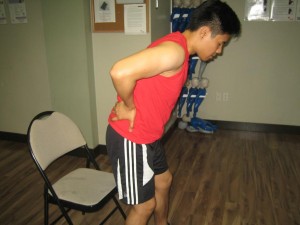A lumbar spine fracture can involve any of the five vertebrae situated in the inferior end of the back which can lead to serious long-term consequences. The vertebrae surround and protect the spinal cord, thus damage to the vertebrae can also affect the spinal cord.
Lumbar spine fractures tend to occur frequently than fractures affecting the thoracic spine since the lumbar vertebrae are more mobile than the thoracic vertebrae. It is important that you know what to do if a lumbar spine fracture is suspected. All you have to do is to enroll in one of the first aid course in your area today.
Possible causes
In most cases of lumbar spine fractures, they are typically caused by trauma. The cases can occur as a result of vehicular accidents while others occur due to falls, gunshot wounds and other accidents. The fractures tend to occur among individuals below 30 years old. The compression fractures caused by weakened bone density can also occur in the lumbar spine, especially among elderly women.
What are the types?

Lumbar spine fractures are categorized into several classifications. The flexion fractures typically include compression fractures in which the vertebra breaks at the front part and axial burst fractures occur where the vertebra collapses at the front and back.
The extension fractures occur once the vertebra pulls apart during an accident where the pelvis is stabilized but the upper body moves forward in a violent manner. As for rotation fractures, they occur once the body bends sideways in a violent manner or once the vertebrae is displaced with one moving away from the one next to it.
Symptoms
Lumbar spine fractures can cause moderate to severe pain that worsens with movement. Numbness, weakness and tingling in the affected area can occur if the spinal cord endured damage. The bladder and bowel control can be affected if the spinal cord is damaged. Many individuals with lumbar spine injury can suffer from serious lasting side effects.
Treatment for lumbar spine fractures
Individuals who sustain severe injuries to the lumbar spine must not be allowed to move without immobilizing the spine unless he/she is in a life-threatening situation such as being inside a burning building.
The stable injuries are those in which the damaged vertebrae are not likely to shift and can heal if stabilized for 6-12 weeks under a cast or brace. Steroid medications can be given to minimize the inflammation and swelling if spinal cord compression is present in order to preserve the function.
In some cases, surgery might be required for unstable fractures in order to prevent spinal cord damage. The unstable pieces of the vertebrae are removed in a process called decompression. Rods, screws and other mechanical devices can be placed in order to stabilize the spine.
Possible complications
Lumbar spine fractures can lead to paralysis if severe damage to the spinal cord was sustained. Other complications include blood clots in the legs due to immobility than can break off and travel to the lungs or other parts of the body. The blood clots can block the flow of blood and can lead to a stroke or pulmonary embolism. Pressure sores and pneumonia can also occur due to immobility. Bleeding and infection can also occur after repair of the spinal cord and there is likelihood that the vertebrae might not heal properly.
